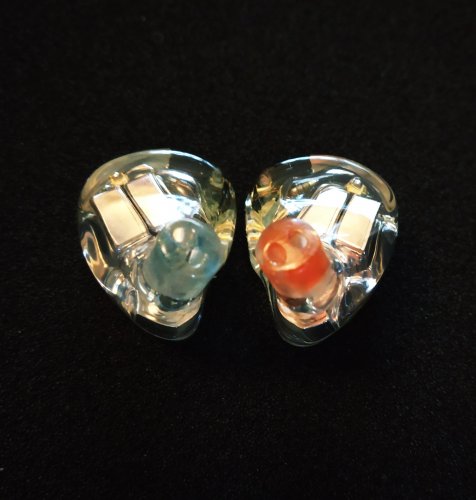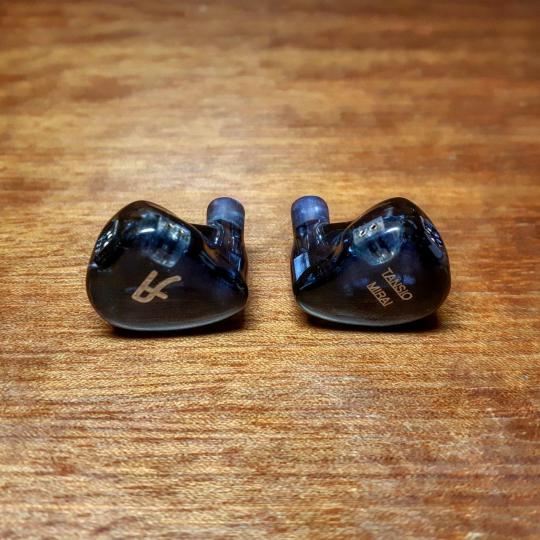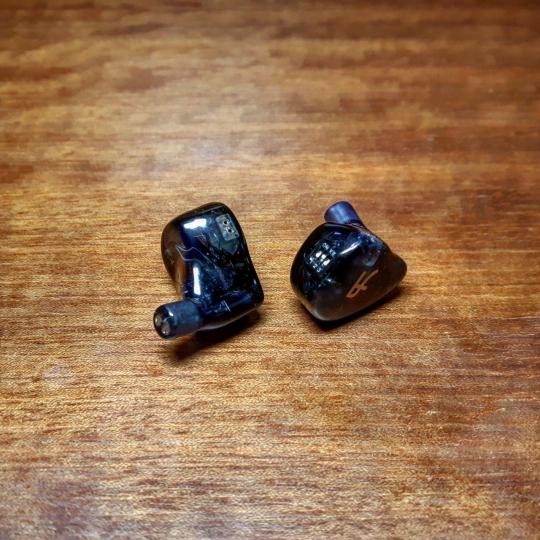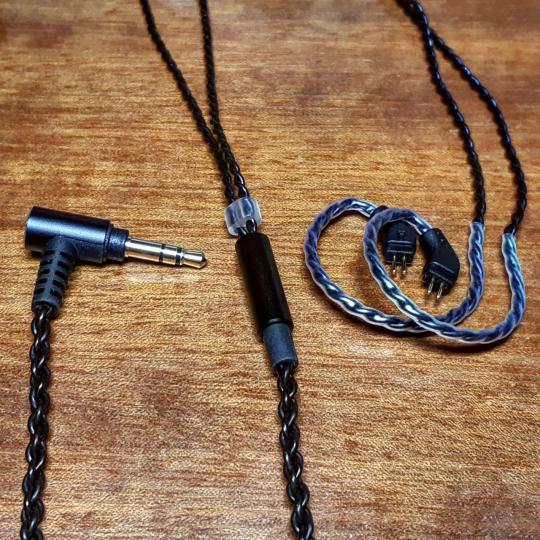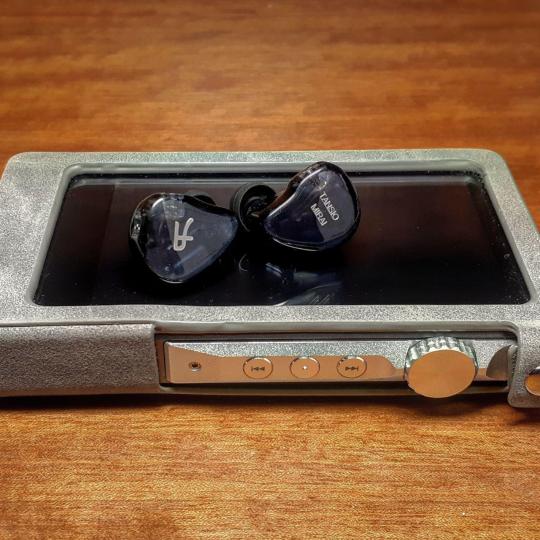
Review here: https://audiorambles.com/tansio-mirai-tsmr-3/
Introduction
The Tansio Mirai TSMR3 sport 3 Balanced Armature drivers per side and are tuneable by 3 switches for a total of 7 configurations. And I know of no better way to start a review of the Tansio Mirai TSMR3 than with a personal anecdote.
When I first bought the TSMR3, it came in what Tansio Mirai claimed to be a “balanced positive mode”. (0,1,0 with “1” indicating the presence of a switch flipped on, and “0” otherwise) Now whatever “balanced positive mode” was supposed to mean, I have and had no idea, but I found them to be mid-forward in nature. There was a distinct lack of bass, and the forward midrange was too fatiguing for my liking.

With that, I looked towards their recommended “low frequency strong mode” (1,0,0). Wow, that’s some hard-hitting bass in comparison! But with a pullback on the midrange, sibilance on the TSMR3 became quite apparent. Messaging a friend who had owned the TSMR 3, he recommended a (1,1,1) configuration, which perplexed me given that it wasn’t listed on the Handbook as a recommended setting, but I gave it a try anyway.
As a result, it’s now the default setting I use and will use throughout this review, given that it’s sufficiently bassy, only occasionally sibilant, and represents the most balanced configuration in my opinion.
The anecdote serves to show the sheer versatility of the TSMR 3 – make no mistake, the tuning system works, and a suitable sound signature should be attainable for most people on these IEMs. While such a gimmick would be wholly undesirable should the drivers inside the TSMR 3 produce mediocre sound, I’m pleased to report that the TSMR3 absolutely dazzles as a whole package.
Also, in case you’re curious and wondering why 3 binary switches yield 7 combinations in total, it’s because (0,0,0) is unlistenable, producing sound akin to a concert inside a trashcan.
Packaging and Accessories
The TSMR 3 arrived in what I can only most flatteringly describe as an “unassuming cardboard box”. Upon opening, all the accessories are nested within the included case which is surprisingly large.
Accessories provided include:
– A large black case, and small pleather pouch
– Earphone Cleaning Tool
-Myriad pairs of silicone tips
-A small metal tuning tool
That’s a very decent haul accessory haul, though I personally find the case way too large, and small pleather pouches incapable of properly protecting my gear.
Build Quality, Fit, Comfort and Isolation
Build Quality (8.5/10): The TSMR 3 is built out of sturdy, thick resin shells, and look like they’d be able to weather a fair bit of abuse. The tuning system has a negative profile, ensuring it cannot be easily damaged.
My preferred 2-pin cable configuration is present here, and feel sturdy upon cable insertion or detachment. Speaking of the cable, though, it’s a relatively cheap braided one that can be bought at maybe $10 on sites like Taobao, and they’re a little too thin for my liking. The black, metal, L-Shaped jack it terminates into, however, is a different story, and inspires a great deal of confidence.
Fit and Comfort (7.5/10): They’re quite comfortable, until they’re not. They’re a little large, so wearing them for long periods of time might cause some discomfort, but for short listening sessions, they stay comfortably in my ears without significant issue. They don’t sit flush in my ears like the BGVP DM6, but rather, stick out of my ears a little.
Isolation (8/10): A lack of vents on the TSMR 3 make isolation great, but not amazing. More than sufficient for daily commutes on the tube/subway/train wherever you’re from.

Sound
Overall, the sound signature of the TSMR 3 is can be said to be balanced with an upper-mid focus.
Bass (6.5/10): The subbass of the TSMR 3 is capable, going significantly deeper than, say the BGVP DM6 on tracks like Lorde’s “Royals”. There is still a noticeable roll-off in the lower registers, and there is still a lack of significantly powerful rumble.
In the midbass, the TSMR 3 doesn’t quite have the weight and slam of a capable dynamic driver, and can feel a little lacking on punch on certain tracks. It does however retain relatively natural decay, though maybe just decaying a little too fast for my liking.
Overall though, the bass is fairly detailed, but texture is on the average side. While the bass on the TSMR 3 might satisfy most folks, bassheads should look elsewhere, as they’re always going to being missing that extra bit of impact.
Mids (7.5/10): The lower mids feel slightly recessed compared to their upper counterpart, but they do shine fairly well on their own. A little more body on male vocals such as Ed Sheeran’s opening verses on “One” is desired, but the velvety texture of his voice comes across clean and clear, along with loads of detail. The same conclusion could be reached on Michael Buble’s tracks, such as “Dream a little dream of me”.
The upper mids of the TSMR 3 are mighty impressive, and the real star of the show. There’s a peak in this region, but the TSMR 3 does well to strike a good balance, being energetic while remaining relatively unfatiguing. Female vocals are forward, sweet and detailed on tracks such as Clean Bandit and Zara Larsson’s “Symphony”, avoiding an overly nasal presnetaiton which many sets with upper mid peaks have fallen prey to.
Highs (6.5/10): The peak found in the upper mids of the TSMR 3 also carries over to the lower treble. The region is slightly boosted, and can occasionally be found to be very slightly sibilant. It is, however, very detailed, with instruments such as cymbals crashes on Rage Against the Machine’s “Killing in the Name” a pleasure to listen to given their excellent decay and air.
The transition from lower to upper treble is smooth and easy to listen to due to the dearth of any sudden or harsh peaks. The very top end of the TSMR 3 experiences a roll-off, so trebleheads would be disappointed. It’s something I would appreciate though, given my personal preference for darker signatures.
Soundstage, Imaging, Seperation and Timbre (8/10): The soundstage of the TSMR 3 is wide, but it’s really the depth that is most impressive, providing for an extremely immersive listening experience. Imaging on TSMR 3 is excellent, as showcased in Dire Straits’ “Sultans of Swing”, with each instrument occupying their own unique positions across the soundscape. Seperation on complicated tracks like “Little Talks” by Of Monsters’ and Men left more to be desired, however. Timbre on the TSMR 3 is great, with instruments and vocals sounding natural, though maybe occasionally sounding a little thin on the upper mid/lower treble regions.
*Special Note on the tuning switches: In essence, the switches provide a bass, mid and treble boost respectively, though when used in combination with one another create varying signatures.*

Conclusions
A sonic chameleon, the Tansio Mirai TSMR 3 complements a capable sound signature with a well implemented tuning system, ensuring that a large majority of the population can and will enjoy the TSMR 3. They’re the whole package, with no obvious flaws, and an easy to recommend entry level set for budding audiophiles.




